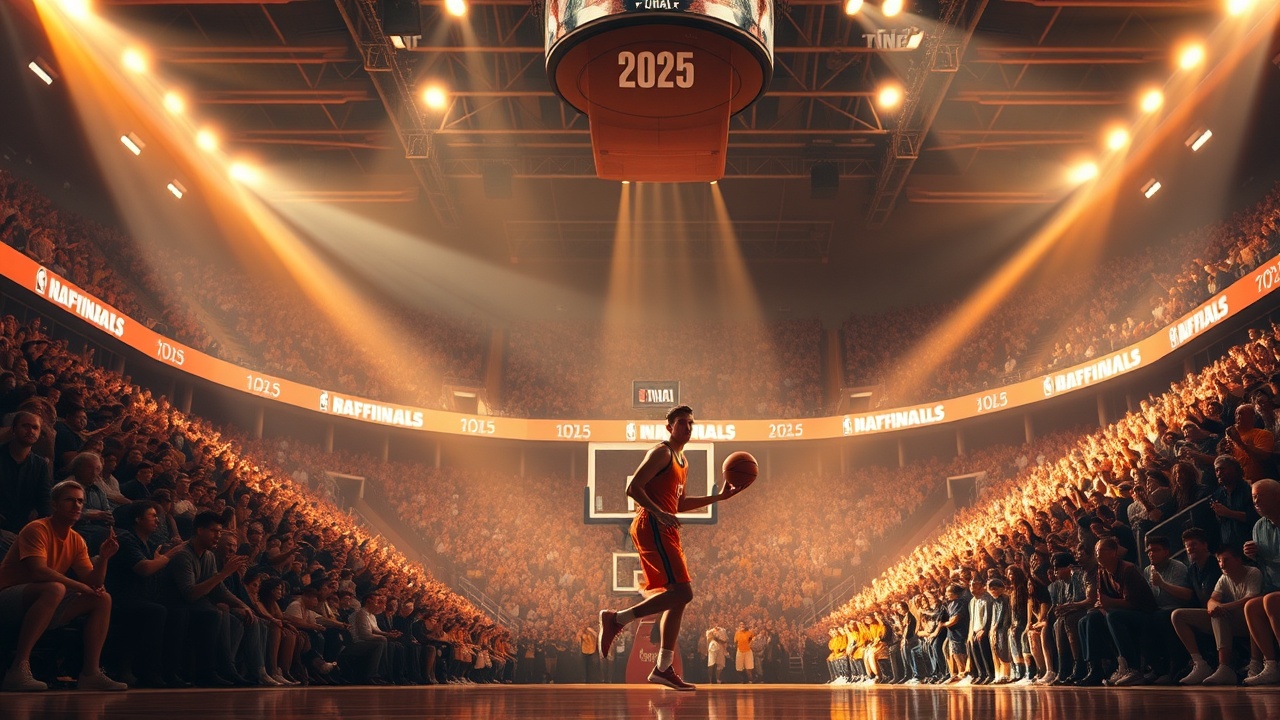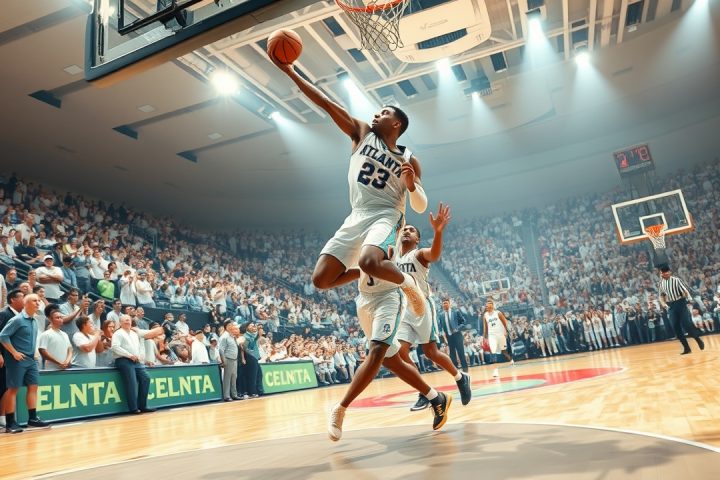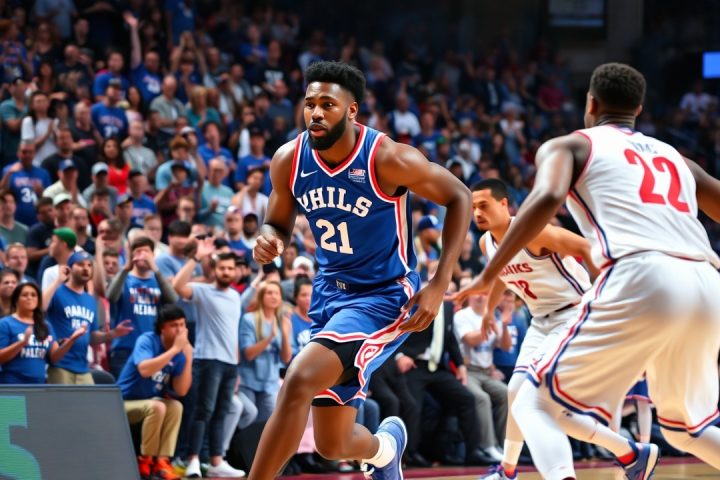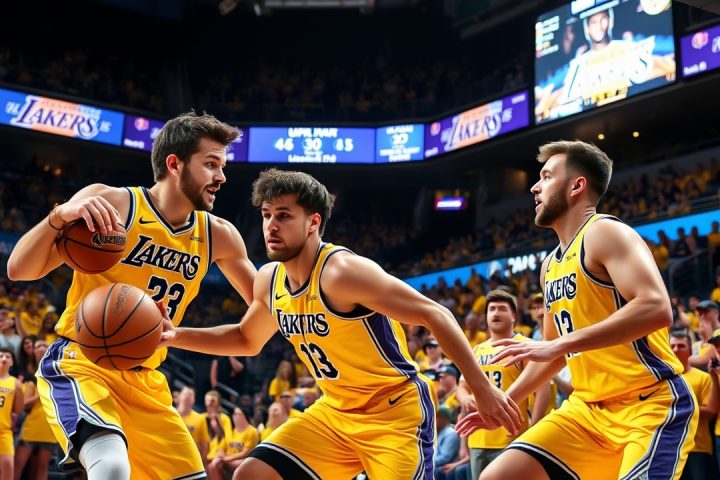Holmgren’s Impact in Game 2 of the NBA Finals
In the closing moments of the first quarter during Game 2 of the NBA Finals, Chet Holmgren of the Oklahoma City Thunder demonstrated his multifaceted skill set, showcasing why he is a player in high demand across the league. Defensively, he impressed by swiftly moving from his initial position in the corner to reject a shot attempt by former dunk champion Obi Toppin. Shortly thereafter, he matched up with the Pacers’ T.J. McConnell, challenging him into a difficult contested shot.
Offensive Versatility
On the offensive end, Holmgren’s versatility was apparent as he landed a smooth three-pointer from the left arc. This was only a prelude to his subsequent moves, where he adeptly maneuvered past Myles Turner to score with a stylish finger roll, leveraging his remarkable 7-foot-6 wingspan. Beyond these highlights, his playmaking also stood out, contributing an assist off a quirky play early in the second quarter.
Overall Influence and Team Strategy
Holmgren’s overall impact goes well beyond the basic box score; he finished with modest numbers of 15 points, 6 rebounds, 1 assist, and 1 block, but his influence on the Thunder’s strategy and chemistry is invaluable. As Oklahoma City emerged as an appealing contender for the championship, the question arises: how crucial is it for teams to possess a player with Holmgren’s unique skill set?
The days of merely coveting 3-and-D wing players are evolving, with the need for 3-and-D big men taking precedence. Holmgren’s adaptability allows him to function effectively as a center or a power forward, which enhances the Thunder’s offensive and defensive strategies. Coach Mark Daigneault mentioned that the Thunder’s performance tends to vary when they shift between smaller and larger lineups, indicating that Holmgren’s presence provides depth and flexibility that many teams crave.
Statistical Advantages
Statistically, Holmgren’s ability to play both positions manifests as a significant advantage. The Thunder, while he is on the court, outperform their opponents by approximately 15 points per 100 possessions, a stark contrast to their performance without him. Interestingly, in their Game 1 defeat to Indiana — where they inexplicably avoided utilizing dual big lineups — Holmgren’s absence highlighted the Pacers’ lack of a comparable secondary big man to complement Myles Turner, which may have influenced the game’s outcome.
League Trends and Team Dynamics
The Thunder’s $87 million investment in Isaiah Hartenstein last summer reflects the league-wide understanding that teams need versatile bigs to unlock their full potential. Looking at the Boston Celtics, their success in the previous season can be attributed to the flexibility provided by bigs like Al Horford and Kristaps Porziņģis, both of whom are capable of shooting the three and fortifying their defense. This versatility allows teams to adapt their lineups for maximum effectiveness.
In the landscape of the NBA, recent champions have relied on players who can interchange between positions, bolstering their strategies and creating mismatches. The performance of Aaron Gordon alongside Nikola Jokić exemplifies this trend, as does the strategic role Draymond Green played with the Golden State Warriors. Examining team rosters in the league reveals a stark reality: successful franchises are often equipped with a Holmgren-like player, while less fortunate ones struggle without that kind of versatile frontcourt asset.
Emerging Demand for Versatile Players
Take the Houston Rockets’ struggles with employing both Alperen Şengün and Steven Adams, who lacked the necessary flexibility in their dual big lineup. Similarly, the Chicago Bulls, featuring Nikola Vučević, grapple with a center who can shoot but struggles defensively, while the Atlanta Hawks feature bigs that defend but offer little offensively.
As the demand for players like Chet Holmgren escalates, it becomes evident that achieving championship success in today’s NBA may indeed hinge on acquiring a versatile big man capable of fulfilling a variety of roles. Champions have consistently leveraged the advantages brought by such players; for teams aspiring to elevate their performance, finding their own version of Holmgren might just be the key to unlocking their championship potential.




